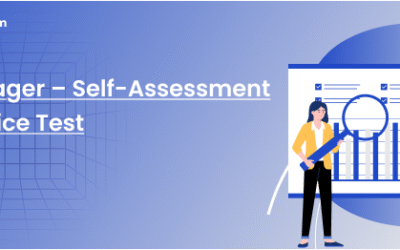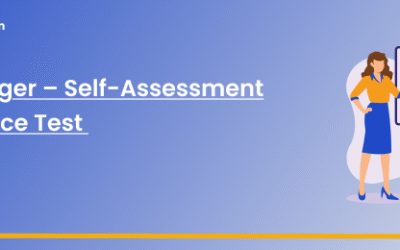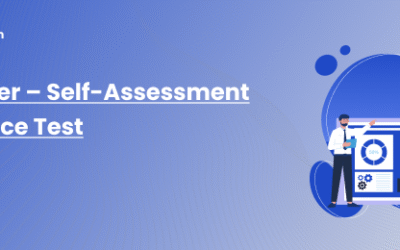Table of Contents
Access Control Management is crucial in safeguarding an organisation’s resources and data. As threats grow more sophisticated, the role of an Access Control Manager becomes increasingly significant. But what exactly does this position entail?
In this post, you’ll discover the core responsibilities that define an Access Control Manager, from managing user access to ensuring compliance with security policies. By understanding these roles, organisations can better protect themselves against various risks. If you want to enhance your security framework, grasping these duties is essential.
Let’s explore how effective access control management not only secures assets but also fosters a culture of accountability within teams. Check out this article on What Is Security Management? Safeguard People and Assets to learn more about enhancing your organisation’s security strategies.
Understanding Access Control Management
Access Control Management plays a critical role in protecting sensitive information within any organisation. It focuses on determining who can access specific resources and under what conditions. This management ensures that only authenticated users can reach sensitive data, significantly reducing the risk of unauthorised access and potential data breaches. As cyber threats continue to evolve, having a robust access control strategy is not just a formality; it’s a necessity.
Definition and Importance
At its core, Access Control Management assigns permissions and rights to users based on their roles in an organisation. This strategy helps safeguard valuable information and resources by preventing unauthorised users from gaining access. Think of it as a digital lock and key system, where only those with the right keys can open the doors to sensitive data.
The importance of Access Control Management can’t be overstated. Here are a few reasons why it’s crucial:
- Security: It protects against data breaches by limiting access to sensitive information.
- Accountability: By tracking user access, organisations can hold individuals accountable for their actions.
- Compliance: Many industries have strict regulations regarding data access. An effective management system helps meet these requirements.
For a detailed look into enhancing security strategies, visit this page on What Is Account Management? Building Client Relationships.
Types of Access Control Models
Access Control Management employs various models to define how access is granted. Understanding these models can help organisations choose the right framework for their needs. Here are the three primary models:
Discretionary Access Control (DAC): In this model, the owner of a resource determines who has access. It’s highly flexible but can be risky if resource owners are not security savvy. Imagine a shared folder where every user can invite others; while it’s convenient, it can lead to security holes if not managed carefully.
Mandatory Access Control (MAC): This model is more restrictive. Access is determined by a central authority, and users cannot change permissions. Think of it like a government building; only those with appropriate clearance can enter, and once inside, they can’t grant access to others.
Role-Based Access Control (RBAC): Here, access rights are assigned based on a user’s role within the organisation. It simplifies management by grouping access rights into roles rather than assigning rights to each individual. This method is akin to a company staff directory where permissions are tailored for specific job functions.
Understanding these models allows organisations to implement a structure that best fits their security needs, ensuring that sensitive resources remain protected.
Roles of an Access Control Manager
The role of an Access Control Manager encompasses several critical responsibilities aimed at safeguarding an organisation’s information and ensuring the appropriate use of resources. Let’s break down the primary duties associated with this position.
Policy Development
Access Control Managers are responsible for creating access policies and guidelines that define who can access specific resources. They assess the needs of the organisation and develop frameworks that balance security with usability. These policies consider various factors, such as user roles, the sensitivity of data, and industry regulations. By establishing clear protocols, Access Control Managers ensure that everyone knows their access rights and responsibilities.
Key steps in policy development include:
- Risk Assessment: Identifying potential threats to information and resources.
- Stakeholder Consultation: Engaging with different teams to gather input and ensure alignment.
- Documentation: Clearly outlining policies to promote understanding and compliance.
A well-structured policy not only mitigates risks but also sets a standard for maintaining accountability within the organisation.
User Access Management
Managing user access rights is a fundamental aspect of the Access Control Manager’s role. This involves granting, modifying, and revoking access permissions based on the needs of employees and the organisation.
Processes involved include:
- Onboarding: Assigning access rights to new employees based on their roles.
- Regular Reviews: Periodically assessing user access to ensure it aligns with current job functions.
- Termination Procedures: Promptly revoking access for employees leaving the organisation to prevent unauthorised access.
Efficient user access management ensures that only the right people have access to sensitive information, which is crucial in preventing security breaches.
Compliance and Audit
Ensuring compliance with regulations is mandatory for Access Control Managers. They need to stay informed about relevant laws and standards that affect data protection, such as GDPR or HIPAA. Keeping up with these regulations helps avoid potential legal issues.
Regular audits are also essential. These evaluations check whether access policies are being followed and identify any gaps that could lead to security risks.
Benefits of compliance and audits include:
- Error Detection: Spotting mistakes in access management before they escalate.
- Policy Improvement: Using audit findings to enhance access policies and procedures.
This proactive approach not only helps in maintaining legal compliance but also reinforces a culture of security awareness.
Collaboration with IT and Security Teams
Successful access control management relies heavily on teamwork. Access Control Managers must collaborate closely with IT departments and cybersecurity teams. This partnership helps in creating a robust security framework that addresses both physical and digital security concerns.
Important aspects of collaboration include:
- Information Sharing: Regularly exchanging data about potential security threats.
- Incident Response: Working together to quickly address any access-related incidents.
- Training and Awareness: Collaborating on employee training to ensure everyone understands access protocols.
Effective teamwork lays the foundation for a security-conscious organisational culture where everyone plays a part in protecting sensitive information. For more insights on policies that safeguard organisations, explore this article on What Is Water Management?.
Responsibilities of an Access Control Manager
An Access Control Manager plays a vital role in safeguarding an organisation’s assets and ensuring that access to sensitive information is well-managed. This position requires overseeing various responsibilities that directly impact the security landscape of a company. Let’s examine the essential duties that come with this role.
Implementing Security Measures
Access Control Managers are tasked with implementing comprehensive security measures to prevent unauthorised access. This involves establishing a range of protocols and technological solutions tailored to the organisation’s needs. Key measures include:
- Access Control Systems: Utilizing systems such as biometrics, keycards, or passwords to ensure that only authorised personnel can access sensitive areas.
- Physical Security: Installing surveillance cameras, motion detectors, and alarms to monitor facilities and deter potential intruders.
- User Monitoring: Continuously tracking user activity to identify any suspicious behaviour or anomalies that may indicate a security breach.
These measures work together to create a robust defence against unauthorised entry while providing peace of mind to employees and stakeholders.
Training and Awareness Programs
Education is a cornerstone of effective access control. Access Control Managers must develop and oversee training programmes that inform employees about access control policies and best practices. These initiatives help foster a culture of security within the organisation. Important components of these programmes include:
- Policy Workshops: Conducting sessions that explain access rights and responsibilities clearly.
- Scenario-Based Training: Using real-world examples to demonstrate potential security threats and appropriate responses.
- Ongoing Awareness Campaigns: Regularly updating employees on new policies or security measures through newsletters or briefings.
By prioritising training and awareness, organisations can significantly reduce the risk of human error leading to security breaches.
Incident Response and Management
When a security incident occurs, the Access Control Manager must act swiftly and effectively. This responsibility covers a range of tasks to manage and respond to incidents, ensuring that any breach is contained and rectified. Crucial steps in incident response include:
- Investigation: Determining the nature and scope of the incident using logs and reports.
- Communication: Informing relevant stakeholders and authorities about the incident while maintaining transparency.
- Remediation: Implementing corrective actions to prevent similar incidents, such as patching systems or revising access policies.
Prompt and effective incident management not only mitigates damage but also enhances the overall security framework of the organisation.
Regular System Reviews and Updates
To maintain a robust access control system, Access Control Managers must conduct regular reviews and updates of existing policies and technologies. This ongoing assessment ensures that the security measures in place remain effective against evolving threats. Key activities in this process include:
- System Audits: Periodically assessing access control systems for vulnerabilities or outdated practices.
- Policy Updates: Adjusting access policies to align with changes in regulations or organisational structure.
- Feedback Mechanisms: Soliciting input from users to identify pain points or areas for improvement in access management.
An effective regular review process not only fortifies security measures but also keeps the organisation agile and adaptable to emerging challenges. For more insights on security oversight, check out this article on What Is School Management? Organise and Lead Your School.
Challenges in Access Control Management
Access Control Management faces several challenges that can impact the overall security and efficiency of an organisation. Understanding these hurdles is crucial for those in the role, as they need to strike a balance between robust security measures and user satisfaction.
Balancing Security with Usability
One of the main challenges in access control management is finding the right balance between security and usability. On one hand, strict security measures are essential to protect sensitive data. On the other hand, overly complex systems can frustrate users, leading to resistance or even workarounds that undermine security.
When security becomes cumbersome, users might resort to unsafe practices, like sharing passwords or writing them down. To tackle this challenge, Access Control Managers can adopt user-friendly solutions. For instance, implementing single sign-on (SSO) can streamline access for users while still enforcing security protocols.
Here are some strategies to maintain this balance:
- User Feedback: Regularly gather input from users to identify pain points in the access process.
- Training Sessions: Offer training to help users understand the security measures and their importance.
- Simplified Protocols: Implement clear and concise access processes that are easy to follow.
By prioritising user convenience while maintaining strong security protocols, organisations can create a safer and more efficient environment.
Adapting to Technological Changes
The rapid pace of technological advancements poses another significant challenge for Access Control Managers. As new solutions emerge, organisations must assess whether to adopt them while considering the impact on existing systems. Integration issues, data privacy concerns, and user adoption challenges can all arise when introducing new technology.
Staying informed about technological trends is essential. By being proactive, Access Control Managers can strategise on how to implement new tools without disrupting workflows.
Key considerations for adapting to technological changes include:
- Regular Evaluations: Assess existing systems periodically to identify areas that could benefit from new technology.
- Training for New Tech: Provide staff with the necessary training when implementing new systems to ensure smooth adoption.
- Integration Planning: Develop a clear strategy for integrating new tools with current systems to avoid compatibility issues.
Being flexible and open to new solutions allows Access Control Managers to enhance security without hindering operations. For insights into how security concepts apply to various management areas, visit this article on What Is Crowd Management? Maintain Safety in Large Settings.
Best Practices for Access Control Management
Effective access control management is key to ensuring the safety and security of information within an organisation. It is not a one-time effort; it requires ongoing attention and a proactive approach. The following best practices can help Access Control Managers optimise their strategies for protecting sensitive data.
Continuous Monitoring and Testing
Ongoing monitoring of access control measures is essential. This practice allows organisations to promptly identify vulnerabilities and respond to security events as they arise. Think of it like checking your home’s locks regularly to ensure they’re functioning properly.
Regular testing, such as penetration testing and audits, can reveal systemic weaknesses in your access control systems. Here are a few methods to implement effective monitoring:
- User Activity Logs: Track user interactions with sensitive data to spot unusual behaviour.
- Access Control Audits: Conduct scheduled reviews to ensure compliance with established policies.
- Incident Response Drills: Regularly simulate security incidents to test your team’s response capabilities.
By adopting continuous monitoring and testing, organisations can maintain a resilient security posture and protect their assets more effectively. For insights on managing potential disruptions, check this article on What Is Incident Management?.
Regular Training and Updates
Keeping staff informed about access policies and security practices is crucial. Regular training sessions enable employees to understand their roles in maintaining security. After all, even the best systems can fail if users are not properly trained.
Training should include:
- Access Policy Overview: Introduce employees to their access rights and responsibilities.
- Security Best Practices: Teach staff how to recognise phishing attempts or suspicious activities.
- Updates on New Systems: Familiarise employees with any new technology or updated protocols.
Consider offering refresher courses every six months to reinforce knowledge. Engaging employees with interactive training sessions can further enhance their understanding and commitment to security. For more information on optimising IT systems, explore What Is Computer Management?.
Utilising Advanced Technology
Modern technologies, such as artificial intelligence (AI), play a significant role in access control management. These tools can streamline processes and enhance security measures. For example, AI can help automate user verification and detect patterns indicative of potential security breaches.
Here are a few technologies worth considering:
- Biometric Authentication: Use fingerprints or facial recognition for secure access.
- Centralised Access Management Systems: Implement platforms that allow for easier adjustments to user rights and permissions.
- AI-driven Analytics: Leverage AI to identify anomalies in user behaviour, allowing for quicker responses to potential threats.
Integrating such technologies can boost efficiency and security, creating a more robust access control environment. For insights on enhancing data security, consider reviewing What Is Database Management?.
Conclusion
The role of an Access Control Manager is not only pivotal but also complex, requiring a careful balance of security, compliance, and user management. By understanding the core responsibilities, organisations can appreciate the importance of this position in maintaining a secure environment.
Summarising Key Responsibilities
Access Control Managers must develop and implement robust access policies, ensuring that security measures align with organisational needs. This involves actively managing user access, conducting regular compliance audits, and collaborating with IT and security teams. Have you considered how your organisation currently addresses these aspects?
The Significance of Access Control
Effective access control is essential for protecting sensitive information. Each responsibility, from policy development to user training, contributes to a comprehensive security framework. Ask yourself, is your organisation equipped to handle the challenges associated with access management?
Ongoing Adaptation and Improvement
Given the ever-evolving nature of security threats, continuous assessment and adaptation of access control measures are vital. Regular training and updates can empower employees to recognise potential security risks. How often does your organisation review its access control policies?
For more insights on managing various aspects of your organisation, check out What Is Product Management? Roles and Responsibilities and What Is Project Management?.



